Every home gardener should consider using companion plants for corn to protect this favorite summertime crop. Corn can easily be damaged by insects and mammals so taking extra steps to protect it is a worthwhile investment of time.
One of my favorite summertime memories was going out to my uncle’s farm when I was about 10. All the aunts, uncles, and cousins picked a wagonload of sweetcorn to bring back to the house.
All the kids helped shuck this massive pile of corn and then the aunts worked in batches blanching, cutting the corn off the cob, and packing it into freezer backs for winter.
There is nothing like freezer corn in the middle of winter!
I have tried growing corn before but never had great success. It seems like the stalks are spindly or need more fertilizer or something.
Recently my 5-year-old daughter started begging to grow corn. So we are…and this time we are using companion plants and natural fertilizers to improve our yield!
Thankfully there are tons of options for companion planting with corn, so any home gardener should be able to find something that works for them!
Table of Contents
Companion Plants for Corn
Here are thirty-one different companion plants that include flowers, herbs, and other vegetables. Happy planting!
1. Anise Hyssop
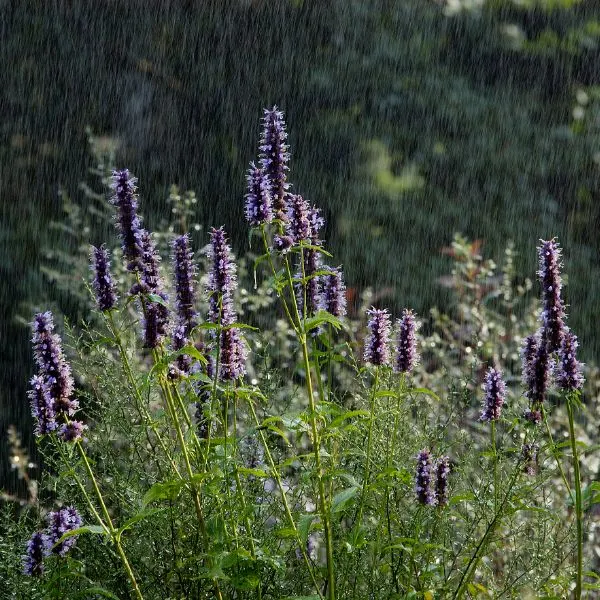
Benefits: The strong smell of anise hyssop is an excellent reason to use it as a garden border if you have a problem with deer. A fence is always the best way to keep these and other mammals away, but strong-smelling herbs can also be helpful.
2. Arugula
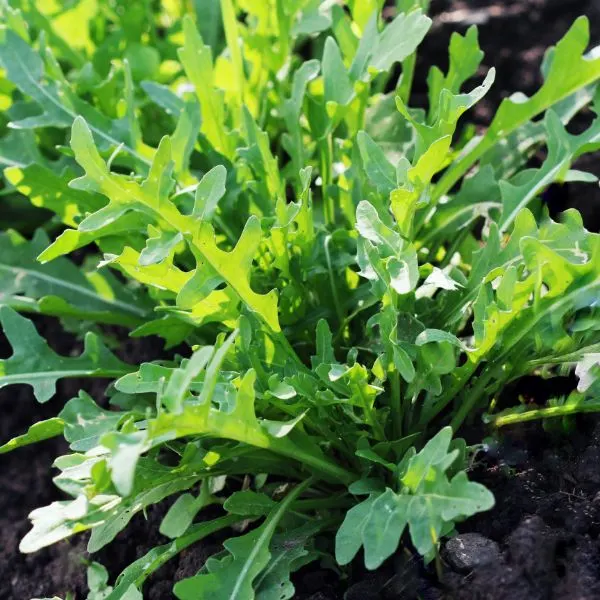
Benefits: Arugula can benefit from being planted on the shady side of corn. Like many greens, arugula will bolt when temperatures get too warm, so providing cooling shade is a good idea.
3. Basil
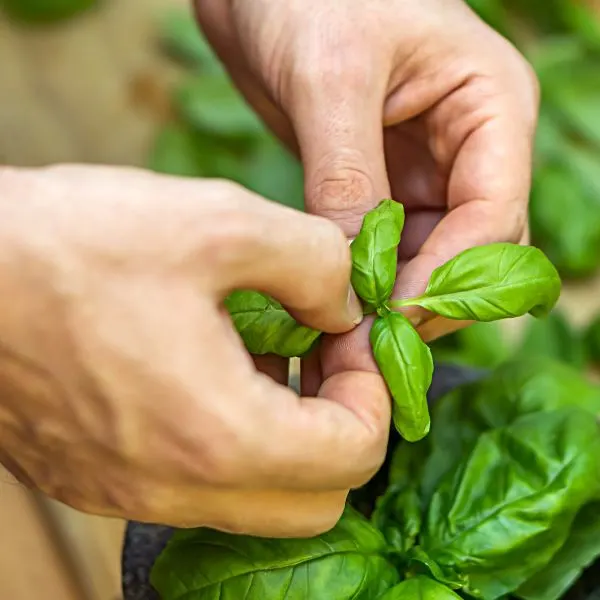
Benefits: Basil like many other herbs is excellent at deterring damaging pests. It repels maize weevils from corn. It can be planted around the corn…or it can be sprinkled dry around the corn plants.
4. Borage
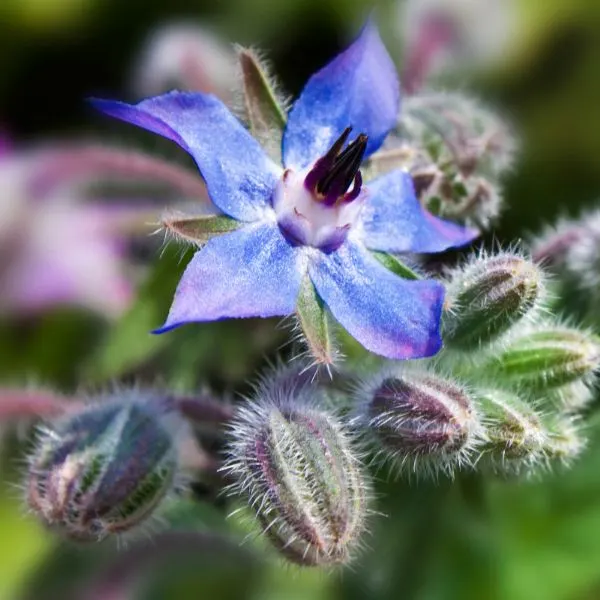
Benefits: Borage can repel worms that damage corn while also attracting beneficial insects like wasps and bees to the garden.
5. Calendula
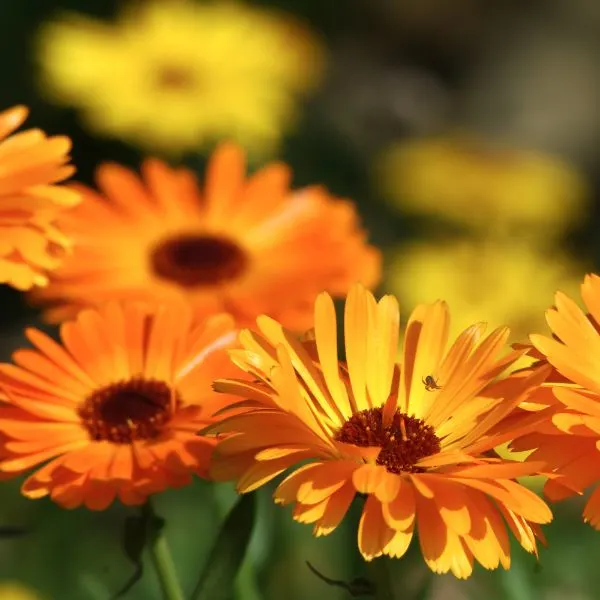
Benefits: Calendula is a great companion plant for corn for two reasons. It acts as a trap crop for aphids attracting them away from the corn. It also attracts hoverflies and lacewing which are beneficial predators.
6. Chives

Benefits: Chives can be planted in the garden if done carefully. Their strong scent will repel many damaging insects. However, chives will also rapidly spread in the garden like weeds unless the flower blooms are deadheaded and not allowed to go to seed.
7. Cosmos
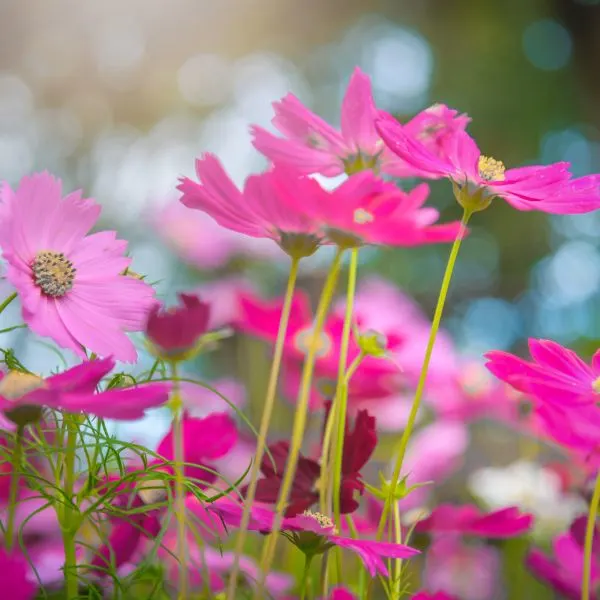
Benefits: Cosmos is a beneficial companion plant to corn when they are planted as decoy plants. They don’t attract a lot of damaging insects except aphids. By planting the cosmos in a bed near the corn (but not right next to it), the aphids will eat the cosmos instead of the corn!
8. Cucumbers
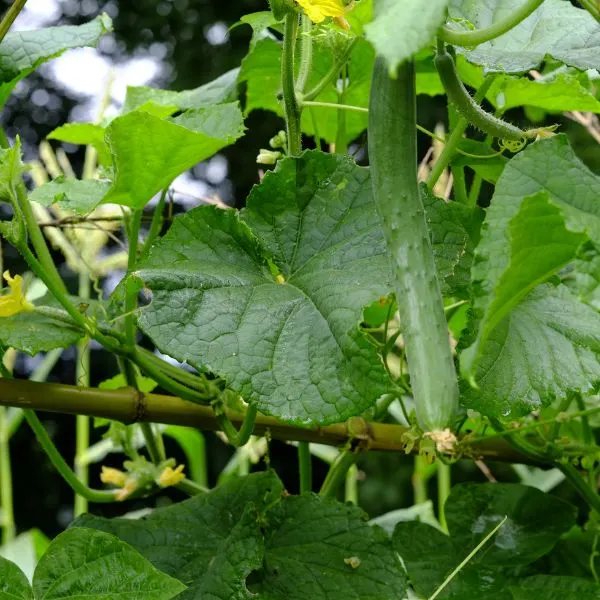
Benefits: One of the biggest “problems” with growing corn is figuring out how to manage the weeds that inevitably grow between the rows. One way to do that is to plant things that grow as a ground cover.
Cucumbers can be planted between the corn and will spread and cover the ground with their foliage helping to shade out weeds.
9. Dill
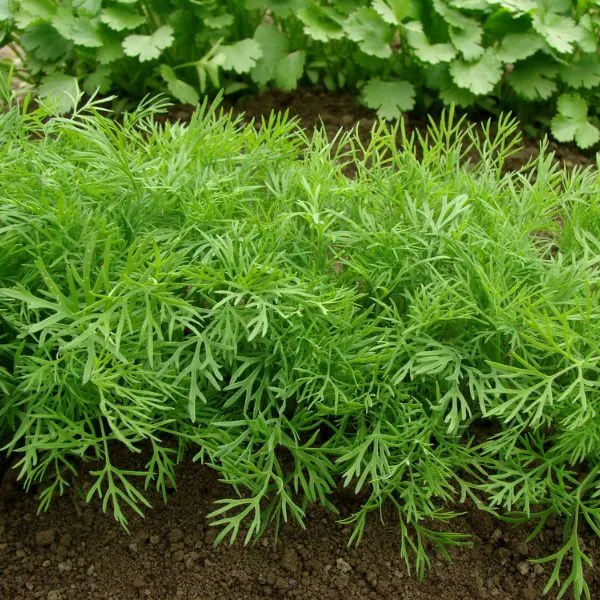
Benefits: Dill is a wonderful companion plant for corn because it attracts many beneficial insects including pollinators like butterflies, hoverflies, wasps, and honey bees.
It is also excellent at repelling aphids, cabbage worms, and squash bugs.
10. Garlic
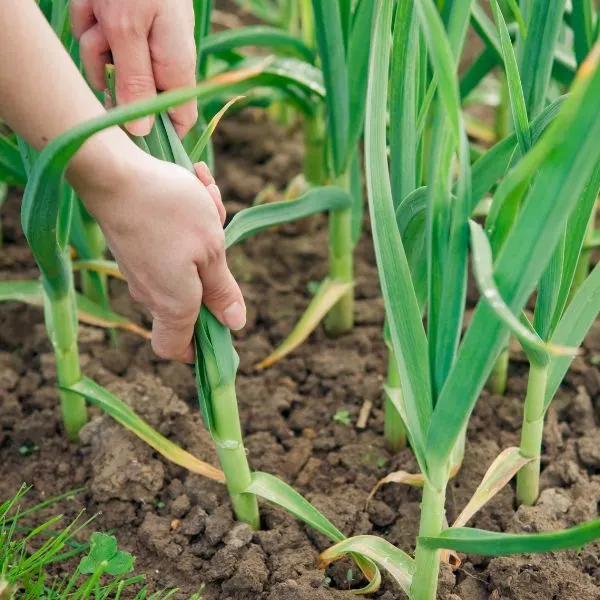
Benefits: Garlic is a super companion plant that benefits almost everything it is planted near. I love garlic because it is planted in the fall and is more fully established when I plant my garden in the spring.
Garlic planted near corn will repel aphids. It is also an excellent deterrent to raccoons and deer.
11. Lavender
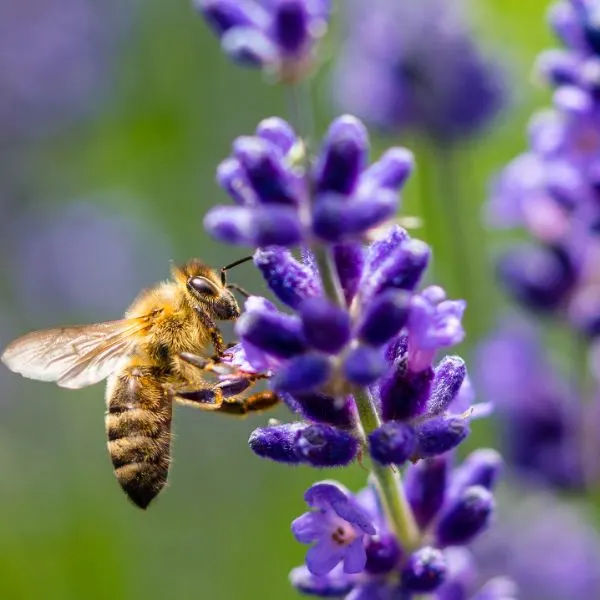
Benefits: Lavender is another herb that is excellent for repelling pests. Create a beautiful and fragrant herbal border to keep the deer away!
12. Lettuce

Benefits: Planting lettuce in the shade of corn can give it a shadier cooler environment to grow in. Additionally, when lettuce is densely planted, it can act as a natural weed barrier which is a great way to manage the soil around the corn.
13. Marigolds

Benefits: Marigolds are something of a super companion plant flower and are excellent for repelling all kinds of insects that damage crops. Specifically, they repel aphids and corn earworms that damage corn.
14. Melons
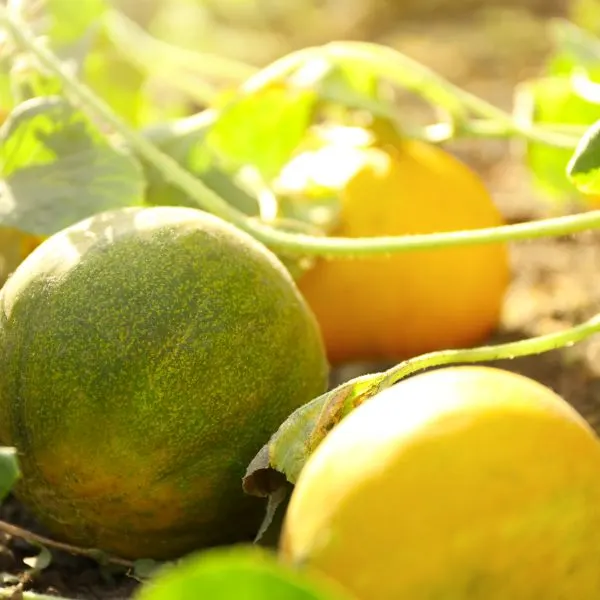
Benefits: Planting melons near corn can benefit the melons and corn. The melon vines spread out between the corn and suppress weed growth. Corn is a known pest repellant for cucumber beetles which damages melon plants.
15. Mint

Benefits: Mint can be a great garden plant for repelling deer. Unfortunately, it also spreads rapidly and invasively. If you want to use mint in your garden, it is better to keep it in pots near your corn so that it doesn’t spread all over the garden.
16. Nasturtiums
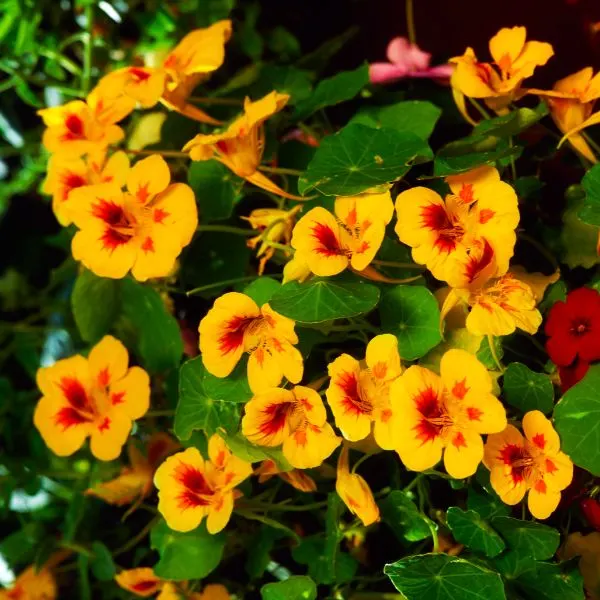
Benefits: Nasturtiums are a trap crop or sacrificial crop. They attract damaging insects away from other crops. Specifically, they attract corn aphids away from corn. It is best to plant them a few feet away from the corn to draw the aphids away from the corn.
17. Onions
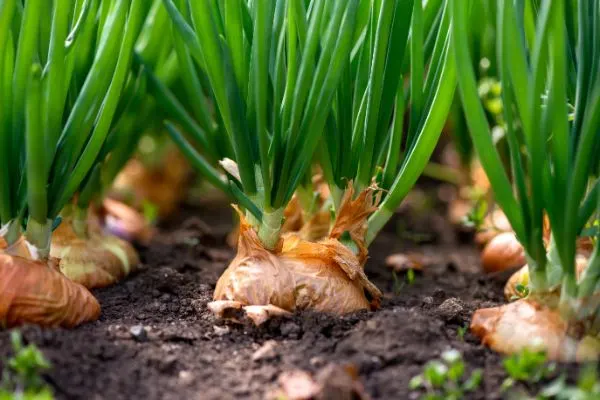
Benefits: Like other plants in the allium family, onions are great companions for corn for their pest-repelling qualities. With their small footprint, they can be planted right in front of the corn as part of a garden border.
18. Oregano
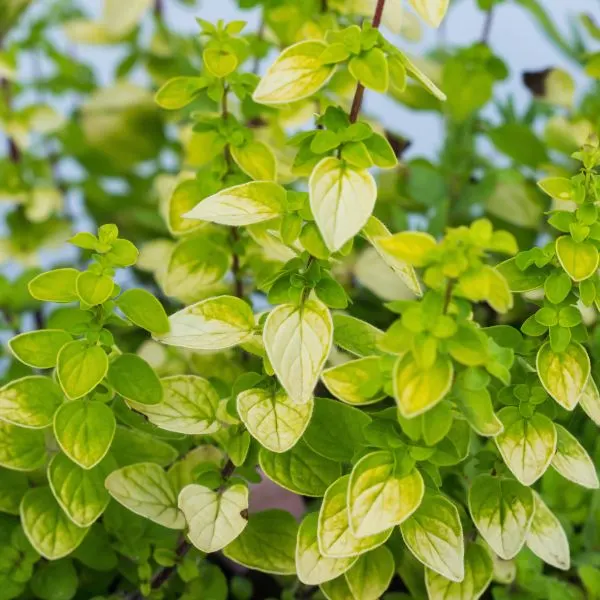
Benefits: Oregano is a pungent herb that is also perennial in many zones making it an easy garden choice for repelling insects. Oregano also repels deer making it a great choice for a garden border around the corn.
19. Parsley
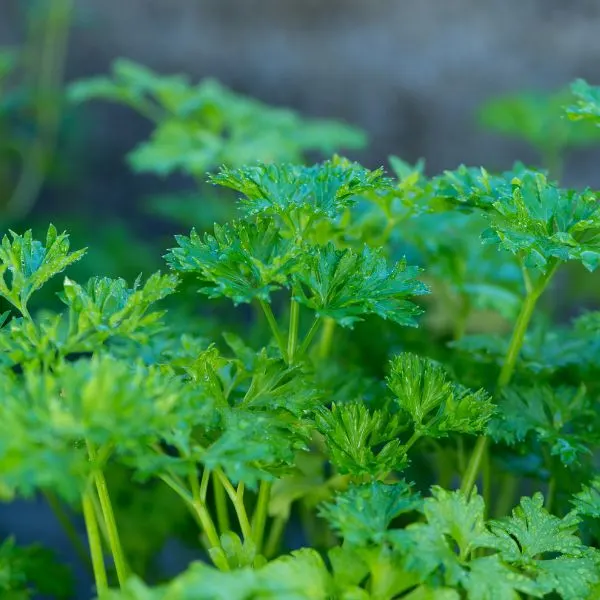
Benefits: Parsley attracts parasitic wasps and tachinid flies who are beneficial predators that eat the worms that damage corn. Parsley also helps repel other insects which might damage corn.
20. Peas
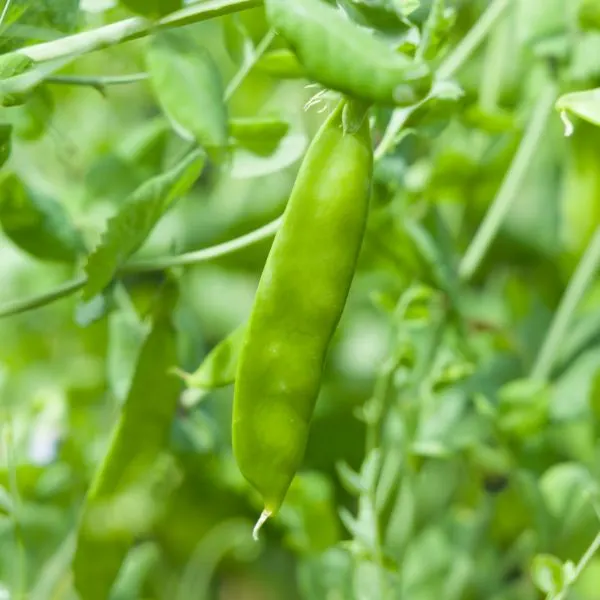
Benefits: Peas are another great nitrogen-fixing plant that can enrich the soil. Peas can be rotation planted with corn. Plant peas early in the spring and follow with corn as the next crop.
21. Pole Beans
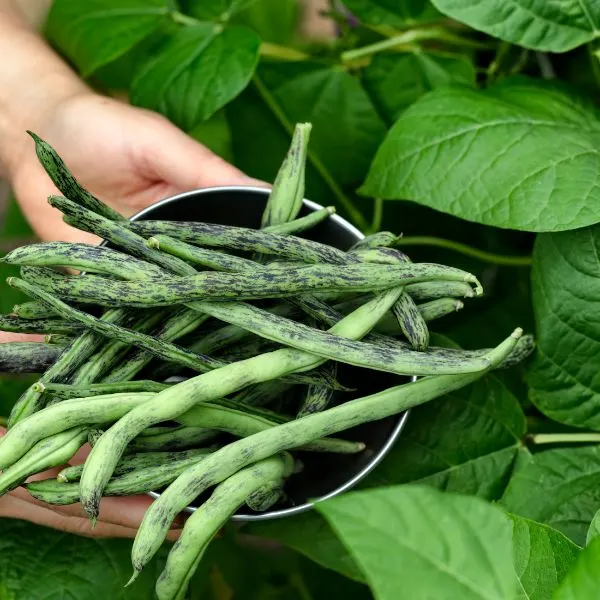
Benefits: Beans are an excellent companion plant for corn and part of the “Three Sisters Trio.” Beans fix nitrogen in the soil which can improve the nutrients in the soil.
In addition, beans can benefit from corn by using them as a climbing structure. Beans should be planted next to the corn when it is several feet tall or they will choke out the corn.
22. Potatoes
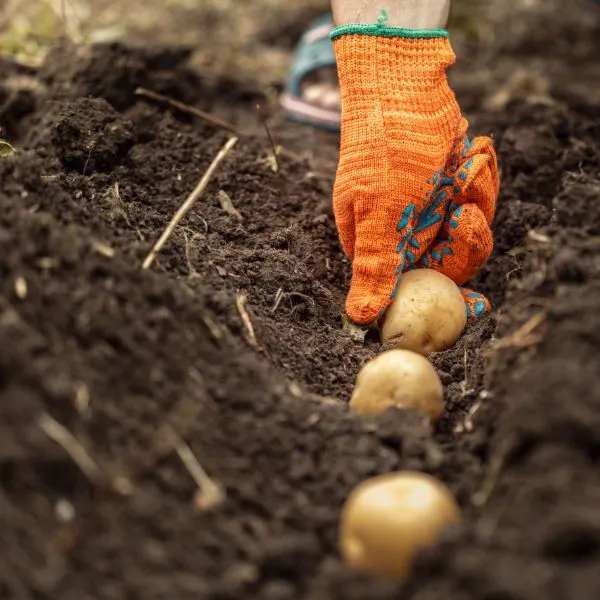
Benefits: Potatoes and corn can be grown in alternating rows to make great use of the space. Corn has shallow roots that won’t disturb potatoes. And corn may also improve the flavor of the potatoes as well!
23. Pumpkins
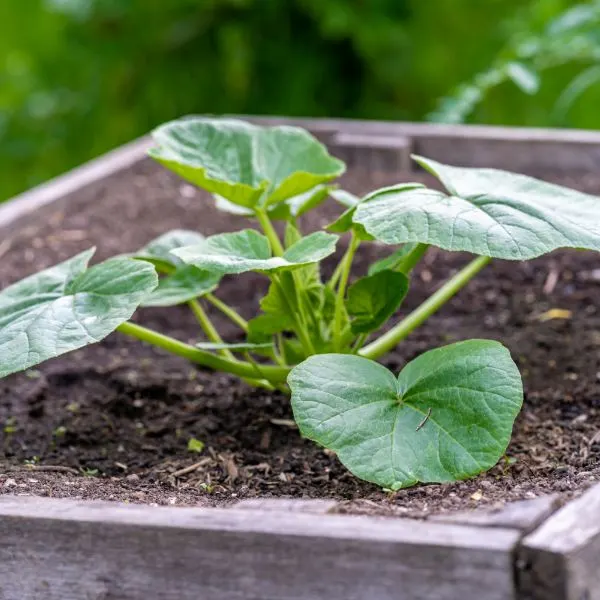
Benefits: Pumpkins and other squash can grow alongside corn as part of the “Three Sisters Trio.” In this trio, pumpkins sprawl along the ground, and their large leaves cool and shade the soil preventing many weeds from growing.
24. Radishes
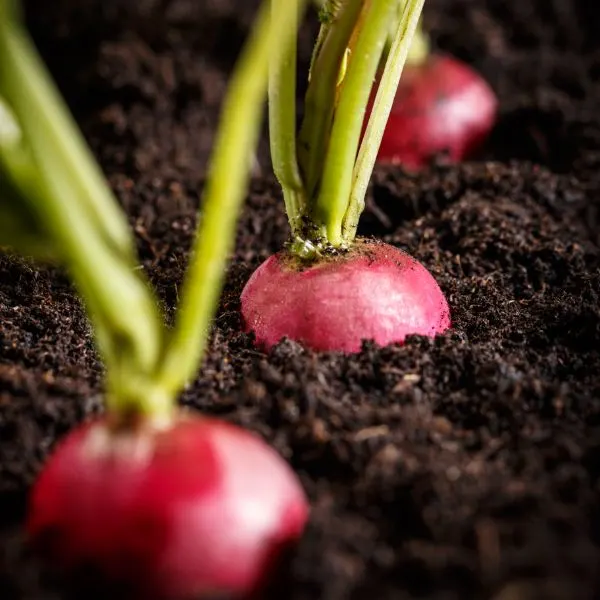
Benefits: Radishes grow very quickly…often being ready to harvest in 30 days. That also means their insect repelling qualities are rapidly available too. Radishes keep squash borers, corn borers, and cucumber beetles away.
25. Sage
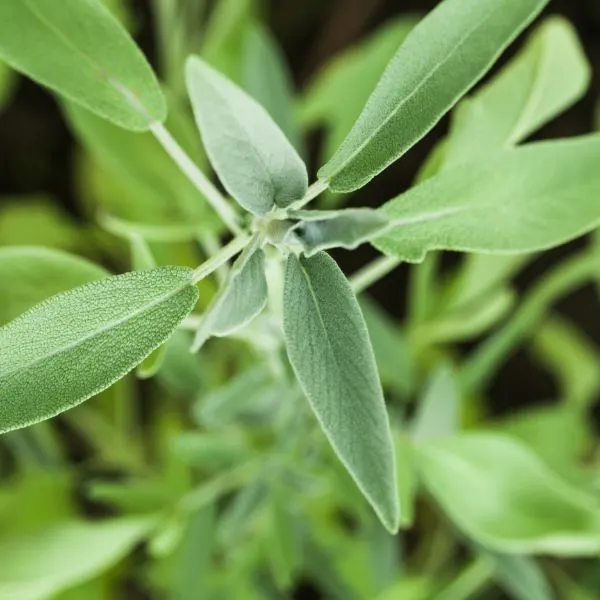
Benefits: Planting sage in the garden offers the same benefit that many other strong-smelling herbs offer. It repels insects that damage corn and other plants. It can also be used to repel deer! Protect your corn with this fragrant herb!
26. Spinach

Benefits: Corn provides a shady environment for low-lying greens like spinach to thrive.
27. Summer Savory
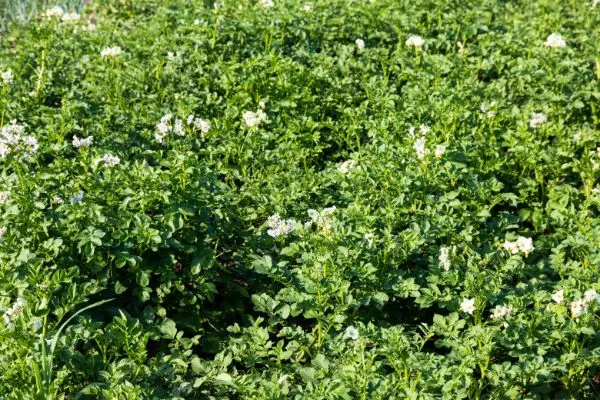
Benefits: Summer savory is another herb that repels damaging insects and attracts beneficial pollinators and predators.
28. Sunflowers
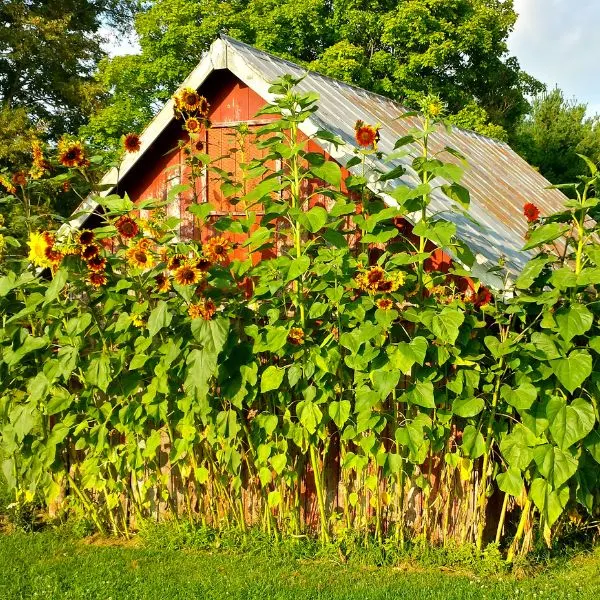
Benefits: Corn and sunflowers can easily be planted near each other despite the fact that they are both tall. They share space well and don’t compete for nutrients.
In addition, a 2012 study in the Journal of the Kentucky Academy of Science, found that dwarf sunflowers planted near corn attracted a huge amount of ladyboys–known beneficial predators that kill damaging insects.
29. Thyme
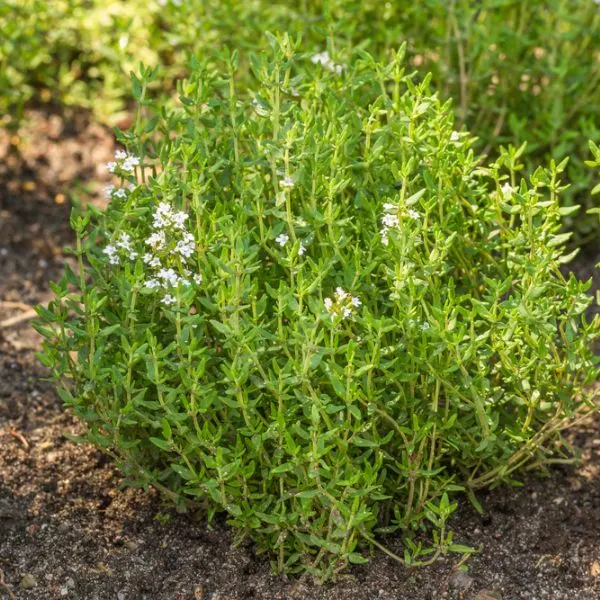
Benefits: Thyme should be added near corn if you have trouble with deer in the garden. Its strong scent will repel them. It is also great for repelling corn earworms which are the primary pest damaging large farm crops.
30. White Clover
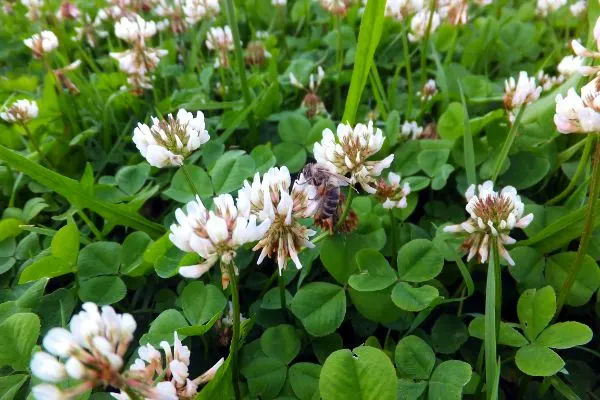
Benefits: White clover provides a double use for corn. Grown with corn, it is excellent at suppressing weeds and it also fixes nitrogen in the soil which provides a natural fertilizer.
31. Zinnias
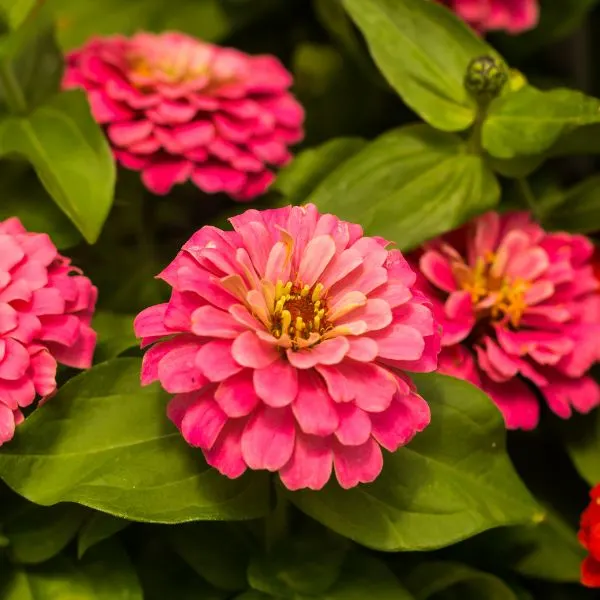
Benefits: Zinnias and other annual flowers are excellent garden companions. They attract parasitic wasps and green lacewings which fight against aphids and corn earworms.
Of course, not everything is a great companion for corn and there are some things that should NOT be planted with it at all!
Avoid Planting These 4 Things With Corn
1. Brassicas
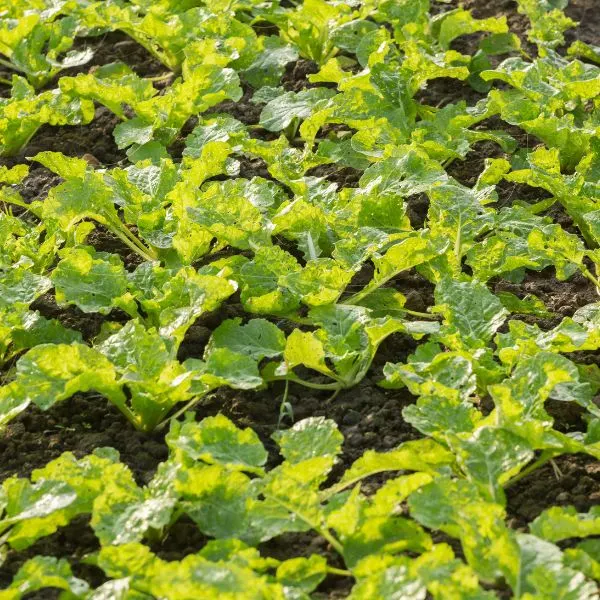
Avoid planting cauliflower, broccoli, cabbage, or other plants in the brassica family near corn. These plants tend to compete for nutrients and do not do well in the shade of the corn plants.
2. Tomatoes

Tomatoes and corn share the same pest. It is known as the tomato fruitworm or corn earworm. Because they have the same pest, it is best to plant them spaced out to avoid attracting insects that damage them both.
3. Eggplant
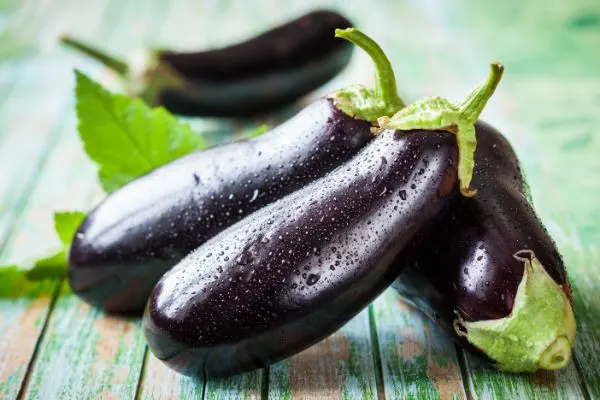
Eggplant and peppers are also plants damaged by the tomato fruitworm /corn earworm. They should not be planted near corn.
4. Fennel
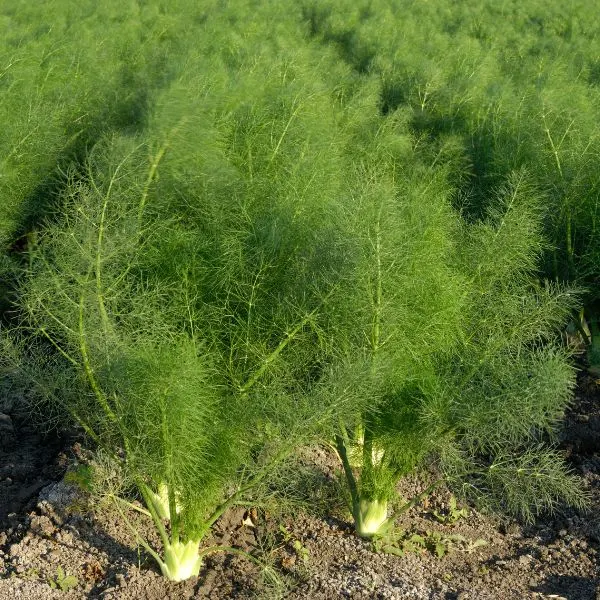
Fennel should not be planted by anything. It releases compounds that stunt the growth of corn and just about everything else!
FAQ About Growing Corn
What happens if you plant corn too close together?
When corn is planted too close together, it produces corn that is not sweet and more starchy in texture.
Can you plant just 2 rows of corn?
Because corn is self-pollinated, it is much better to plant it in blocks rather than 1 or 2 long rows. Without adequate pollination, corn will grow but will be missing many kernels on the cob.
How much corn can you grow in a 4×4 bed?
In the book, Square Foot Gardening, it is recommended that you grow 4 corn plants per square. In a 4×4 bed, that would mean growing 64 corn plants.
How many ears of corn can grow on a corn stalk?
Most early sweet corn will only have 1 ear per stalk. However, later maturing varieties may have 2 ears with the second ear being much smaller.
Add Corn To Your Garden This Summer!
If you and your family love corn, consider adding a block of corn to your garden this summer. Whether you grow it in the ground or in a raised bed, add your favorite companion plants and enjoy a better-than-average crop!
More companion plants
